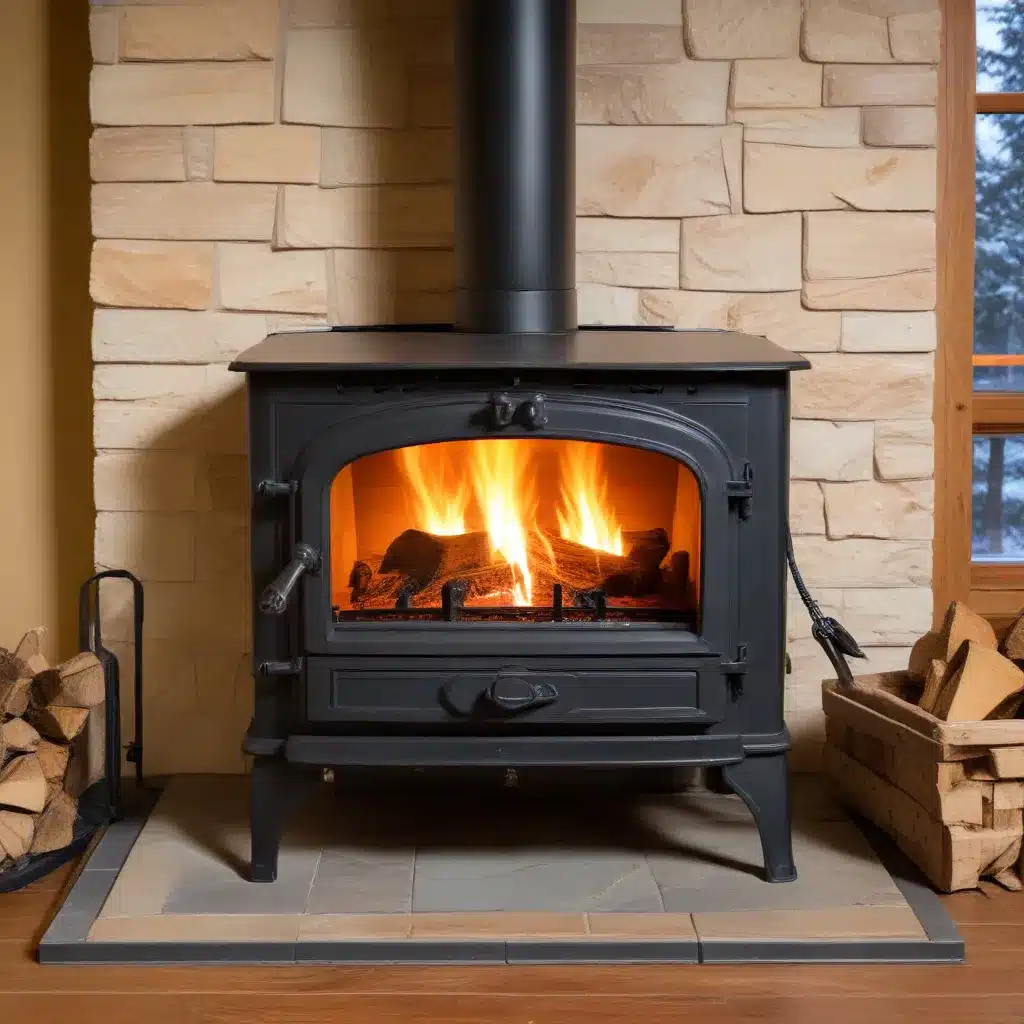
Understanding the Fundamentals of Wood Stove Heating
Wood stoves are a popular and cost-effective heating solution for many homeowners, especially in areas with abundant wood resources. However, achieving optimal heating efficiency can be a challenge, as several factors come into play. As a seasoned expert in wood stove technology and home heating, I’m here to share practical tips and insights to help you maximize the efficiency of your wood stove and save on your energy bills.
The Importance of Proper Wood Stove Installation
One of the most critical factors in wood stove heating efficiency is the initial installation. Proper placement, venting, and integration with your home’s existing heating system can make a significant difference in how effectively your wood stove warms your living space. When installing a wood stove, be sure to consult with a professional who can assess your specific needs and ensure the stove is properly situated to maximize airflow, minimize heat loss, and comply with local building codes.
Choosing the Right Wood Stove Model
Not all wood stoves are created equal when it comes to heating efficiency. Factors like size, design, and construction materials can greatly impact a stove’s performance. When selecting a wood stove, consider the square footage of the area you need to heat, as well as the stove’s BTU (British Thermal Unit) output, efficiency rating, and any advanced features that can enhance its heating capabilities.
Understanding Wood Stove Efficiency Ratings
Wood stove efficiency is typically measured by the EPA (Environmental Protection Agency) and expressed as a percentage. The higher the efficiency rating, the more of the wood’s energy is converted into heat for your home, rather than being lost through the chimney or other avenues. Aim for a wood stove with an efficiency rating of at least 70%, as these models tend to be more economical and environmentally friendly.
Proper Wood Stove Maintenance and Operation
Maintaining your wood stove and operating it correctly can have a significant impact on its heating efficiency. Regularly cleaning the stove, clearing the chimney of buildup, and using the appropriate fuel (seasoned, dry hardwood) can all contribute to a more efficient heating system. Additionally, learning proper wood stove loading techniques and air flow management can help you get the most out of your investment.
Optimizing Wood Stove Heating Efficiency
Sealing Air Leaks and Improving Insulation
One of the most effective ways to improve the efficiency of your wood stove heating is to address any air leaks in your home. Drafts and poor insulation can undermine the heat generated by your wood stove, causing it to work harder and consume more fuel. Seal any cracks, gaps, or openings around windows, doors, and other potential entry points, and consider upgrading your home’s insulation to retain the heat more effectively.
Utilizing the Thermal Mass of Your Home
The thermal mass of your home – the ability of materials like concrete, brick, or stone to absorb and store heat – can be a valuable asset when it comes to wood stove heating efficiency. By strategically placing your wood stove near or against thermal mass elements, you can take advantage of their heat-retaining properties, allowing the stored energy to be gradually released and distributed throughout your living space.
Optimizing Airflow and Heat Distribution
Proper airflow management is crucial for maximizing the efficiency of your wood stove. Ensure that the stove’s air intake and exhaust systems are functioning correctly, and consider installing fans or ductwork to help circulate the heated air throughout your home. Additionally, the placement of your wood stove in relation to the layout of your living space can impact how effectively the heat is distributed.
Utilizing Thermal Mass Furniture and Accessories
Beyond the structural elements of your home, you can also incorporate thermal mass into your furniture and accessories to enhance wood stove heating efficiency. Items like stone or ceramic-based coffee tables, end tables, or decorative elements can absorb and slowly release heat, extending the warmth provided by your wood stove.
Advanced Wood Stove Heating Strategies
Integrating with Other Heating Systems
For optimal energy efficiency, consider integrating your wood stove with other heating systems, such as a forced-air furnace or a hydronic (water-based) heating system. By using the wood stove as a supplemental heat source, you can reduce the workload on your primary heating system, leading to significant energy savings.
Exploring Heat Storage and Release Systems
Advanced wood stove heating technologies, such as thermal storage systems or masonry heaters, can further boost the efficiency of your wood stove. These systems capture and store the heat generated by the wood stove, releasing it slowly over time to maintain a more consistent and even temperature in your home.
Incorporating Renewable Energy Sources
To take your wood stove heating efficiency to the next level, consider integrating renewable energy sources, such as solar panels or wind turbines, to power auxiliary heating components or charge batteries that can store excess heat generated by your wood stove.
Conclusion
By understanding the fundamentals of wood stove heating, implementing practical efficiency-boosting strategies, and exploring advanced technologies, you can unlock the full potential of your wood stove and enjoy significant energy savings. Remember, every home and heating situation is unique, so be sure to consult with experienced professionals to find the best solutions for your specific needs. Visit https://woodstoveheaters.com/ to learn more about wood stove heating and explore a wide range of high-efficiency models and accessories.


